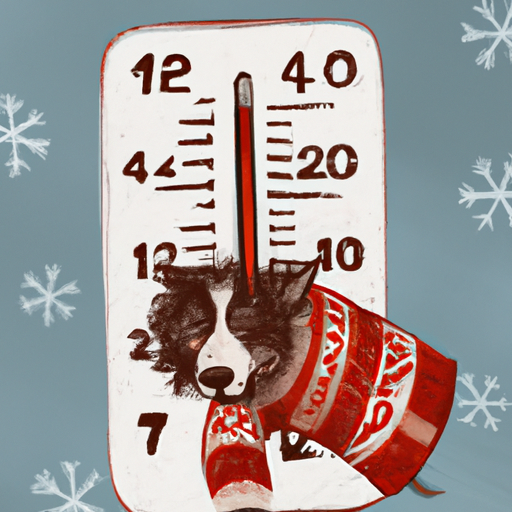Canines are more than just pets. They are faithful companions and members of our families. As dog owners, we are responsible for their well-being, which includes ensuring they are comfortable, safe, and healthy in all weather conditions. A question that often worries dog owners, particularly as the winter season approaches, is “At what temp do dogs get cold?” This article will delve into this critical topic, providing you with insightful knowledge to ensure your furry friend stays comfortable and safe, even in the chilliest weather.
Table of Contents
- Understanding Canine Thermoregulation
- Factors Influencing a Dog’s Tolerance to Cold
- Recognizing Signs of Hypothermia in Dogs
- How to Keep Your Dog Warm
- Frequently Asked Questions
Key Takeaways
- Dogs have a higher body temperature than humans and their threshold for feeling cold is typically around 45°F (7°C).
- The breed, age, health, and size of your dog can significantly affect their tolerance to cold.
- Recognizing the signs of hypothermia in dogs is crucial for their health and safety.
- There are several ways to protect your dog from the cold, including providing proper shelter, using dog sweaters or coats, and adjusting their diet.
Understanding Canine Thermoregulation
Dogs typically feel cold when the temperature drops to around 45°F (7°C). Unlike humans, dogs have a higher body temperature, ranging between 101°F and 102.5°F (38.3°C and 39.2°C). Hence, they can withstand cooler temperatures than we can.
However, this doesn’t mean that our four-legged friends are immune to the cold. Dogs, like humans, have a thermoregulation system, which is their physiological process that allows them to maintain an internal body temperature within certain boundaries, even when the surrounding temperature varies. A dog’s fur is its first line of defense against the cold. Regardless of the length, the coat traps a layer of air heated by the dog’s body and keeps the cold out. For more information on how dogs regulate their body temperature, you can check out this external link.
Factors Influencing a Dog’s Tolerance to Cold
The breed, age, health, and size of your dog can significantly influence their tolerance to cold. Some breeds have a double coat that provides ample insulation against the cold, such as Siberian Huskies or Alaskan Malamutes, while others, like Greyhounds or Chihuahuas, have a single layer of fur and may feel cold more easily. Similarly, puppies, elderly dogs, and those with health conditions may struggle more in colder temperatures. Over at One Top Dog, they provide excellent resources on understanding your dog’s breed and their specific needs.
Recognizing Signs of Hypothermia in Dogs
Just as humans can develop hypothermia in extreme cold, so can dogs. Recognizing the signs of hypothermia in your dog is crucial. These signs include excessive shivering, lethargy, muscle stiffness, low heart and respiratory rates, and in severe cases, a loss of consciousness. If you believe your dog is suffering from hypothermia, it’s essential to get them to a vet immediately. This external link provides more detailed information on hypothermia in dogs.
How to Keep Your Dog Warm
Protecting your dog from the cold doesn’t have to be a challenge. Here are some practical tips:
- Provide proper shelter: If your dog spends a lot of time outside, ensure they have a warm, dry shelter that protects them from the elements.
- Use dog sweaters or coats: These can be beneficial, especially for breeds that don’t have a double coat.
- Adjust their diet: Dogs may need more calories in the winter to generate enough energy to keep warm.
Furthermore, there are heated dog beds and other innovative solutions available to keep your furry friends cozy during the cold months.
Frequently Asked Questions
1. Do all dogs need a coat in winter?
No, not all dogs need a winter coat. Dogs with a dense double coat, like a Samoyed or Akita, are naturally insulated for cold weather. However, small dogs or those with short or thin coats can benefit from wearing a winter coat.
2. How can I tell if my dog is cold at night?
If your dog is shivering, looks anxious, slows down or stops moving, tucks its tail, or seeks out warm places, these are signs that your dog might be feeling cold.
3. Can dogs get sick from cold weather?
Yes, dogs can get sick from extreme cold weather conditions. They can suffer from hypothermia and frostbite – just like humans.
In conclusion, it’s essential to understand your dog’s individual needs to provide the best care possible, especially in colder temperatures. Remember, if it’s too cold for you, it’s probably too cold for your dog. Stay informed and keep your best friend safe. For more dog care tips, visit One Top Dog.



